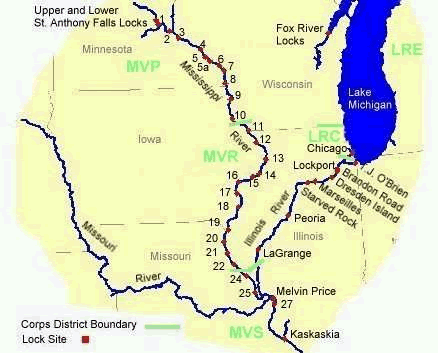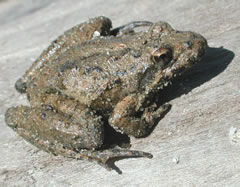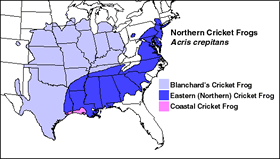Current
Study Areas
Upper
Mississippi National Wildlife and Fish Refuge
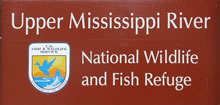 The
Upper Mississippi National Wildlife and Fish Refuge (Refuge) includes
most of the floodplain along more than 400 km of the Mississippi
River that forms the borders of Minnesota, Wisconsin, Illinois,
and Iowa. More people visit this Refuge each year than any
other Refuge in the United States. The
Upper Mississippi National Wildlife and Fish Refuge (Refuge) includes
most of the floodplain along more than 400 km of the Mississippi
River that forms the borders of Minnesota, Wisconsin, Illinois,
and Iowa. More people visit this Refuge each year than any
other Refuge in the United States.
-
The physical nature of the floodplain of the
Mississippi River in the Refuge is defined to a large extent
by the system of locks and dams that have created areas referred
to as pools along the river. The Refuge is contained mostly
within Pools 4 - 14 (Alma, Wisconsin, to Bettendorf, Iowa).
|
U.S. Army Corps of Engineers' map of lock
and dams |
| |
| |
- Populations of amphibians that live in the floodplains of
large rivers have been studied less than those living in many
other types of wetlands.
- Populations in the Refuge face several threats, including
nearby habitat loss and fragmentation, exposure to contaminants,
and changes in the frequencies of floods in association with
climate.
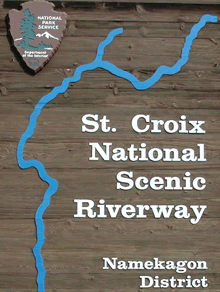 St.
Croix National Scenic Riverway St.
Croix National Scenic Riverway
- This St. Croix National Scenic Riverway (Riverway) includes
approximately 400 km of riverine habitat along the Namekagon
and St. Croix Rivers; the St. Croix River forms a substantial
portion of the border between Wisconsin and Minnesota.
- As with the Refuge, the Riverway provides a long, narrow strip
of protected habitat in a largely unprotected landscape, where
land uses, such as urbanization, logging, and agriculture can
reduce the distribution and abundance of amphibians.
Voyageurs
National Park
- Voyageurs National Park is in northern Minnesota along the
border with Canada.
- Voyageurs contains a landscape different from

those within the Refuge
and Riverway. Three principal differences are the primarily
lentic (still water), rather than lotic (moving water), aquatic
systems, the land use outside of the park includes less agriculture
and more logging, and the shape of the park, which is not long
and linear like the Refuge and Riverway.
Other
mid-level and apex sites
Port
Louisa National Wildlife Refuge Complex
- Port Louisa National Wildlife Refuge consists of four subunits
starting south of the Upper Mississippi River National Wildlife
and Fish Refuge and extending southward along the Mississippi
River between Illinois and Iowa.
- We will be conducting surveys in portions of this Refuge,
with a special emphasis on Blanchard’s cricket frogs.
We might include breeding sites of Blanchard’s
cricket frogs located in this Refuge in the set of apex sites
where we will study this species in more detail.
Neal
Smith National Wildlife Refuge
- Neal Smith National Wildlife Refuge is just southeast of Prairie
City, Iowa, and east of Des Moines, Iowa.
- This Refuge is unique because it is the site of one of the
largest prairie restoration efforts in the country. Based
upon preliminary surveys we conducted in 2003, several amphibian
species live there, including Blanchard’s cricket frogs.
We expect to include breeding sites of Blanchard’s
cricket frogs from the Neal Smith Refuge in our set of apex
sites for studying this species. We also will monitor
other species and include this Refuge in larger studies of the
effects of habitat fragmentation and loss on populations of
amphibians. This latter effort will be in collaboration with
researchers from Iowa State University.
Other
areas in Minnesota, Iowa, Illinois, and Wisconsin
-
We are surveying historical and potential
breeding sites for Blanchard’s cricket frogs in Minnesota,
Iowa, Illinois, and Wisconsin to document the current distribution
of this species in portions of its northern range. We
intend to study this species more intensively at several breeding
sites.
Other
potential study areas in the Midwest Region
- All lands managed by the Department of the Interior in the
Midwest Region of ARMI are potential study areas for
us eventually. This also is true for areas managed by other
Federal and State agencies. As we develop expected rotations
of monitoring sites over time, we will conduct surveys and monitoring
in other areas.
Studies
of Exposure to Pesticides
- We sampled water from 100 breeding sites for the presence
of triazines during 2003. These sites were in the Upper Mississippi
National Wildlife and Fish Refuge, the St. Croix National Scenic
Riverway, and Voyageurs National Park. We also collected
metamorphosed northern leopard frogs (Rana pipiens)
from seven of those breeding sites to analyze for any gonadal
abnormalities and to determine if frequencies of gonadal abnormalities
were associated with levels of triazines. We are working
to analyze those gonads, collect and analyze more water samples
for triazines, and to collect and to analyze gonads from more
animals during 2004.
Studies
of Disease and Deformities; Collaborations with Dr. David Green
- Dr. David Green is a veterinary pathologist and an expert
on diseases and deformities found in amphibians and other wildlife.
- As a USGS researcher at the National
Wildlife Health Center, Dr. Green is working with ARMI scientists
to characterize the distributions of disease and deformities
throughout the country. We send animals from our study areas
for analyses of such afflictions to Dr Green.
Studies
of Water Chemistry with staff from USGS's Water Resources
- Staff from USGS's Water Resources are integrated into ARMI.
- We work with Perry Jones of the USGS in St. Paul, Minnesota, to
collect water samples from our study sites and have them analyzed
for various chemical constituents. We are collaborating
with Perry Jones on our studies of triazines and other compounds
at breeding sites.
Cooperative
Efforts on Effects of Habitat Loss and Fragmentation and Climate
with staff from the USGS's Earth Resources Observation Systems (EROS) Data Center
- Staff from EROS are integrated into ARMI.
- We are working with Drs. Alisa Gallant and Robert Klaver from
EROS to evaluate relations between habitat loss
and fragmentation and the vulnerability of populations to decline
and relations between climatic patterns over several decades
and declines of Blanchard’s cricket frogs.
Collaborative
Efforts with Outside Researchers
Iowa
State University
- The natural habitat of Iowa has been altered greatly for agriculture,
including the loss of approximately 98% of the state’s
wetlands.
- We are working with faculty and students from Iowa State University
to study effects of habitat loss and fragmentation on populations
of amphibians in Iowa.
Evaluations
of Statuses of Populations Based Upon Results from non-USGS Studies
- We are working to collect and evaluate as much data as possible
regarding the status of populations across the 13 states of
our region. Researchers associated with state agencies, other
Federal agencies, museums, and academic institutions produced
these data.
|



